The thermometer outside shows -6 degrees Celsius, snow covers the ground and the sea is as flat as a mirror. Most divers would consider it completely insane to go diving in conditions like these, knowing that the temperature in the water will be close to the freezing point. But what shall you do when you live close to the arctic circle and diving is your biggest passion? The only thing you can do is: Dress up!
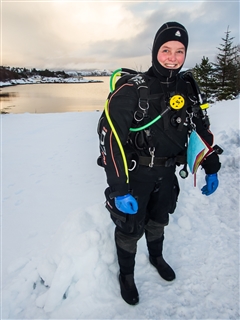
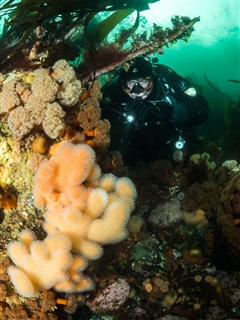
Ann Karin Matberg • OM-D E-M1 Mark II • M.ZUIKO DIGITAL ED 8 mm 1:1.8 Fisheye PRO
• PT-EP14 • PPO-EP02 • 2 x Sea&Sea YS-D1
When diving in tropical waters and hearing other divers complain about temperatures of 18, 22 or even 26 degrees Celsius, all I can do is slightly shake my head. That is not cold water. I am not saying that I have’t complained myself. Being perfectly warm in my 5mm suit in Bali and suddenly feeling the water temperature drop from 26 to 18 degrees, literally feeling the skin on my head shrink, is a highly unpleasant feeling. And yes, I have come up from dives in the Philippines with blue lips, shivering after 90-minute dives in 25 degrees in a wetsuit that was just too thin and feeling as if the water was just too cold. But it really wasn’t cold. It was just me being dressed improperly.
So when is the water cold then? For someone that has only been diving in tropical waters, the water temperature of southern Europe sounds insane. And for many people in southern Europe, diving in a cold Norwegian fjord sounds like a nightmare. For a Norwegian, however, cold water means temperatures lower than 8 degrees Celsius. But if you are properly clothed for cold water diving, diving close to the arctic circle can be just as pleasant and colorful as diving in the tropics.
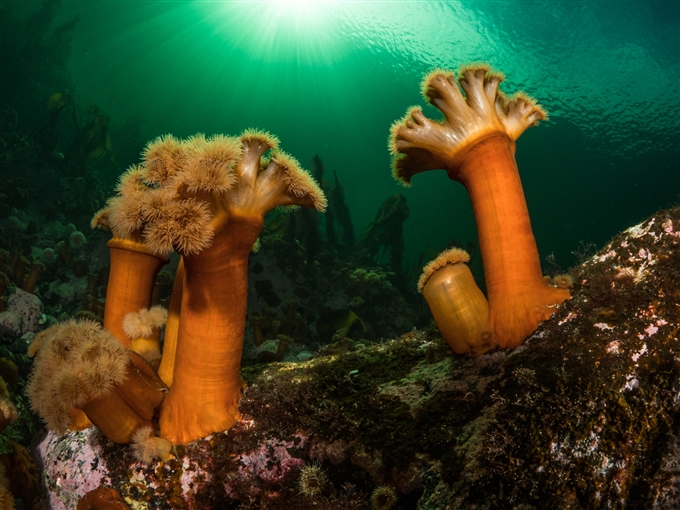
Ann Karin Matberg • OM-D E-M1 Mark II • M.ZUIKO DIGITAL ED 8 mm 1:1.8 Fisheye PRO
• PT-EP14 • PPO-EP02 • 2 x Sea&Sea YS-D1
What to wear to make cold water diving enjoyable?
Keeping the water away from the skin as much as possible is essential. So a dry suit is a must. Either a neoprene suit, or a shell suit of some kind. A suit made of neoprene gives insulation in itself and it makes less undergarments necessary. But often, it is both heavier and harder to put on than a shell suit. The shell suit hardly gives any insulation, but is often softer, more comfortable and easier to put on than a neoprene suit. But due to the lack of insulation, you then need to compensate with more undergarments.
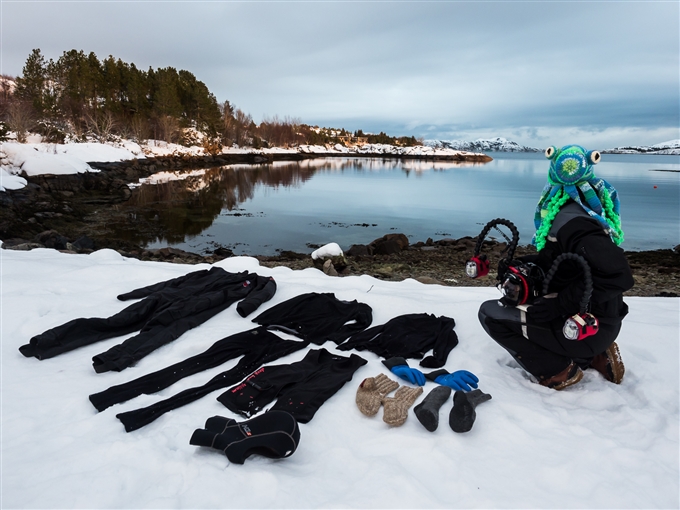
Ann Karin Matberg • OM-D E-M1 Mark II • M.ZUIKO DIGITAL ED 8 mm 1:1.8 Fisheye PRO
For someone that freezes easily, the amount of clothes needed under the suit is huge. The keywords here are wool and electricity. While wool has been used since the dawn of diving in cold water, electricity as an aid is quite new. Wool underwear, wool shirts and pants, wool socks and home knitted ragg socks are quite common in Norway. In addition, many manufacturers have made non-wool underwear specifically for diving. With names like Polarwear, Warmtec and Arctic, they all promise to keep you warm under water. But for many of us this is simply not enough, especially during long dives with a camera. So electricity is a solution. But any photographer that has drowned a flash or a camera knows that batteries and salt water are not the best combination. To minimize the risk of batteries drowning due to leaks, causing severe burning of the diver, waterproof connections and infrared heating is incorporated into vests, gloves or full body suits nowadays, making it less likely that any leaking will occur.
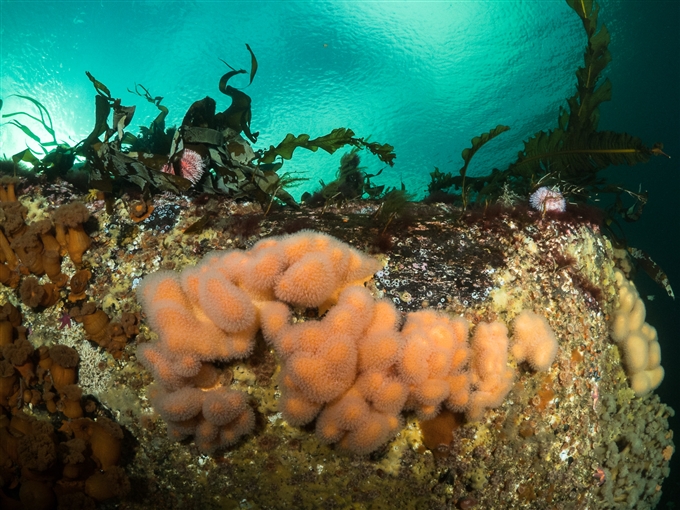
Ann Karin Matberg • OM-D E-M1 Mark II • M.ZUIKO DIGITAL ED 8 mm 1:1.8 Fisheye PRO
• PT-EP14 • PPO-EP02 • 2 x Sea&Sea YS-D1
Keeping warm under water is one thing. But it is equally important to stay warm before you enter the water. If you are already cold before you enter the water, then freezing even more is not far away when you immerse yourself in cold water. That is why a warm coverall, thick gloves and a (wool)hood belong to a typical diver’s outfit where I live. From the picture you can see what one might hide under the drysuit when diving during the coldest time of the year: Two layers of wool and an infrared heating vest on the upper body, one or two layers of wool on the lower body, a one-piece dive undergarment, two layers of wool socks, a 10 mm hood and dry gloves with wool under-gloves. Some divers even have dry hoods, that will keep you even warmer. This makes it possible to keep comfortably warm during long dives with a minimum of swimming.
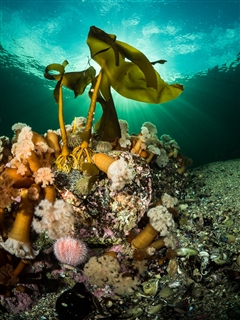
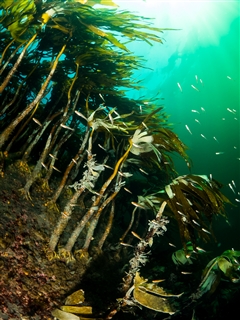
Ann Karin Matberg • OM-D E-M1 • M.ZUIKO DIGITAL ED 8 mm 1:1.8 Fisheye PRO
• PT-EP11• PPO-EP02 • 2 x Sea&Sea YS-D1
Is it worth it?
All the insulation you need makes it necessary to wear either heavy steel tanks or a considerable amount of led. The heavy equipment, the feeling of being thick, clumsy, bulky and restrained from moving is something one actually does get used to. But surely, we sometimes miss the smoothness of a light wetsuit and 4 kg of led from tropical waters when dragging all this equipment around. So why do we even bother?
The western coastline of Norway is fed with the “warm” water from the Golf stream all year around. This results in temperatures that rarely drop below 3 degrees even during the coldest winter months, and comfortable summer temperatures around 12 degrees. This water is extremely rich in nutrition which leads to a massive bloom of aquatic life, and corals, anemones and kelp forests thrive in the sea. Fish, crustaceans and mollusks surround you almost anywhere you go. Add a rich occurrence of wrecks, and visibility that easily reaches 30-40 meters during winter time, there is no doubt in my mind that diving the cold waters is worth it!
Comments
Show more comments (4)